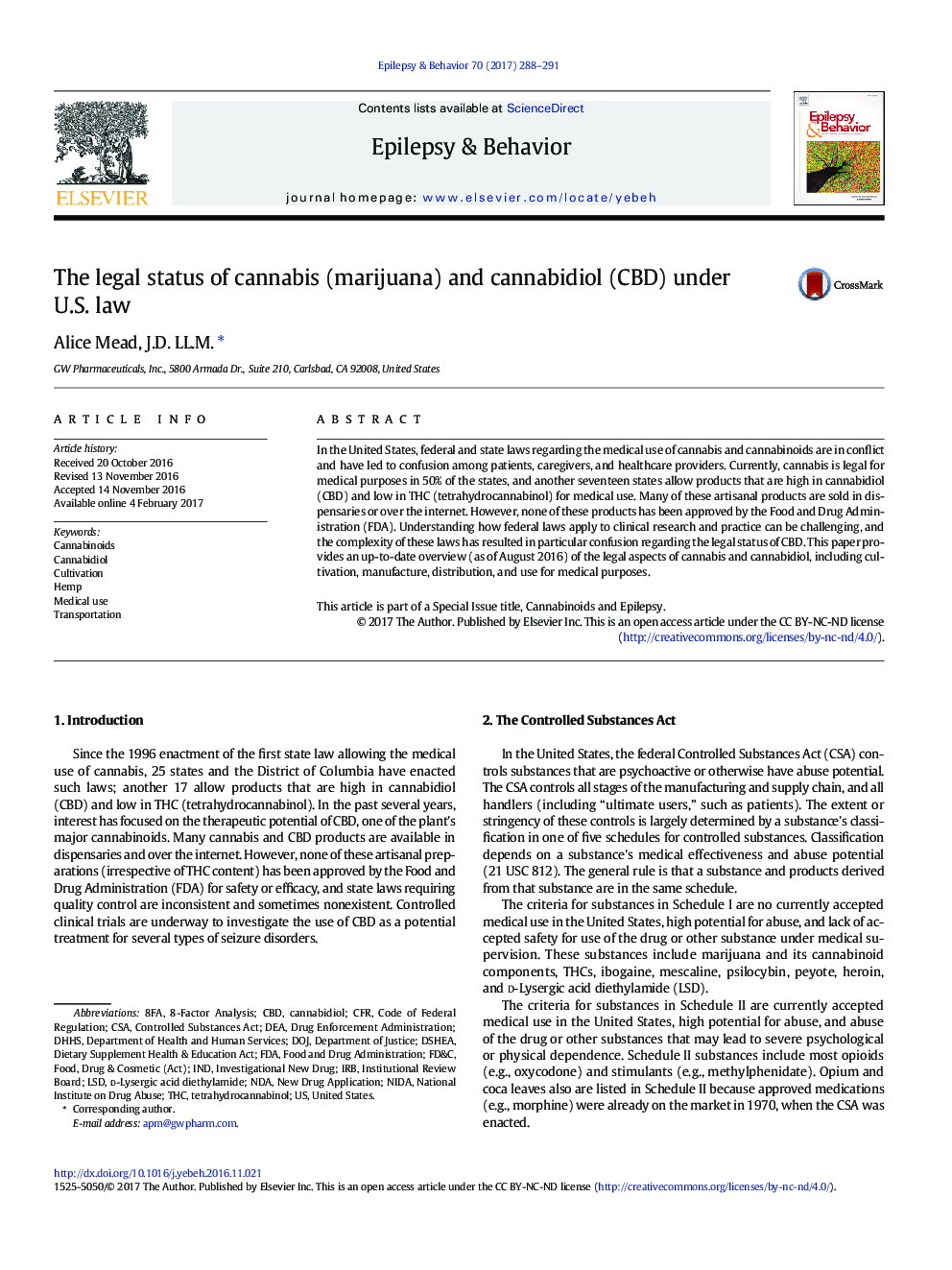| Article ID | Journal | Published Year | Pages | File Type |
|---|---|---|---|---|
| 5627984 | Epilepsy & Behavior | 2017 | 4 Pages |
â¢In the United States, federal and state laws regarding the medical use of cannabis and cannabinoids are confusingâ¢Many states allow cannabis products high in cannabidiol and low in tetrahydrocannabinol to be sold for medical useâ¢The legal aspects of cannabis' and cannabidiol's cultivation, manufacture, distribution, and medical use are reviewed
In the United States, federal and state laws regarding the medical use of cannabis and cannabinoids are in conflict and have led to confusion among patients, caregivers, and healthcare providers. Currently, cannabis is legal for medical purposes in 50% of the states, and another seventeen states allow products that are high in cannabidiol (CBD) and low in THC (tetrahydrocannabinol) for medical use. Many of these artisanal products are sold in dispensaries or over the internet. However, none of these products has been approved by the Food and Drug Administration (FDA). Understanding how federal laws apply to clinical research and practice can be challenging, and the complexity of these laws has resulted in particular confusion regarding the legal status of CBD. This paper provides an up-to-date overview (as of August 2016) of the legal aspects of cannabis and cannabidiol, including cultivation, manufacture, distribution, and use for medical purposes.This article is part of a Special Issue title, Cannabinoids and Epilepsy.
